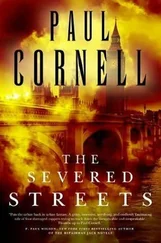“That is correct,” says Garvey.
“So it might be significant to find out if anyone close to her or any of the possible suspects which we’ll talk about at some later time may have been a smoker and specifically a smoker of Newports.”
“Objection,” says Doan, trying for a broken field tackle. “Is there a question?”
“Yes,” says Polansky. “Would you agree it is significant?”
“No,” says Garvey, regrouping. “Because we don’t know when the cigarette pack was placed there. It was beneath the bed. It certainly would have been something to look into, but it would have been something I wouldn’t base an investigation on.”
“Well,” says Polansky, “except for the fact, sir, wouldn’t you agree that Ms. Lucas was a very neat person and not likely to have left a pack of cigarettes on the floor for some long period of time?”
“Objection,” says Doan.
“Isn’t it much more likely the pack was left there the night of the murder?”
“Objection.”
Gordy intervenes. “Can you answer that question to a reasonable degree of certainty? Yes or no?”
From the prosecution table, Doan is staring at the detective, his head moving back and forth in a slight, barely discernible shaking motion. Take the out, he wants to say. Take the out.
“I can answer,” says Garvey.
“Overruled,” says Gordy.
“Underneath the bed there appeared to be a fair amount of debris. The overall visible areas in the house were neat and tidy, but underneath the bed I would not characterize it as being neat and tidy.”
“Was the phone under the bed?” asks Polansky.
“Yes,” says Garvey, looking at the photo. “We moved that back to take the photograph.”
“It is fair to say the phone wasn’t lying there a long period of time?”
“I don’t know when the phone was placed there,” says Garvey.
A partial save by a veteran detective. Polansky counts his winnings and moves on, asking about the human hairs that were recovered from the sheet by the lab tech and sent to the trace section. Were they ever compared to anyone?
“You can’t tell from a hair who it belongs to,” says Garvey, now on his guard.
“They can’t tell you anything more than that about hair. There is no scientific test that is at all helpful in a homicide investigation?”
“There is no way they can tell you that a particular hair can come from a particular person.”
“Can they narrow it down to a white man’s or black man’s?” asks Polansky.
Garvey grants the point: “But they can’t go too much farther.”
The detective and defense attorney circle each other for several more questions until Polansky’s point is clear: The hair recovered at the scene was never compared to anyone else’s hair. Even though such a comparison would be pointless, Polansky leaves the impression that Garvey’s investigation was less than thorough.
So far Polansky has earned his money. Garvey proves as much at the end of the cross-examination, when the defense attorney asks him about time-of-death.
“Rigor mortis had been fully set and she was coming out of rigor mortis,” says the detective. “Also, with the dried bloodstains underneath her head-the blood was thick and coagulated and the outer edges of the blood were dried into the carpet-it seemed to me she had been there probably for twenty-four hours.”
Polansky and Doan both look up. Twenty-four hours would put time of death at late afternoon the previous day.
“She had been dead for twenty-four hours?” asks Polansky.
“That’s correct,” says Garvey.
Doan looks hard at the witness, trying to make Garvey think the answer through.
“So it would have been your conclusion she had to have been killed at least at five P.M. on the twenty-first?” says Polansky.
Garvey realizes. “I take that back. No, I’m sorry. I got confused. I meant at least twelve hours.”
“I thought that’s what you meant,” says Polansky. “Thank you. No further questions.”
On redirect, Doan goes back to the recovered hairs, but that only allows Polansky, in his follow-up questions, to suggest again that the detective was not interested in pursuing all the evidence: “If you checked those hairs, you would have been able to determine whether they belonged to Mr. Frazier or Ms. Lucas or someone else. Is that not true?”
“If we did a comparison between their hairs we can tell if they were similar,” repeats Garvey wearily.
“Which you had the ability to do, but you didn’t do it,” says Polansky.
“I felt no need to do it,” says Garvey.
“That’s a pity, sir. Thank you.”
The last comment gets to Doan, who turns in his chair to look at Polansky. “Come on,” he says sarcastically. Then Doan looks up at the judge. “I have no further questions.”
“You may step down, sir,” says Gordy.
The first day ends. In the corridor five minutes later, Garvey encounters Polansky and feigns anger, cocking a fist as if ready to throw a punch. “You miserable shyster,” he says, smiling.
“Hey, now,” says Polansky, a little defensive. “Nothing personal, Rich. I’m just doing the job.”
“Oh, I know it,” says Garvey, hitting the defense attorney’s shoulder. “I got no complaint.”
But Doan is not so easily mollified. Walking back to his office with Garvey, he issues a few choice epithets for his worthy adversary.
The hairs, the Newports-that was smoke, the raw material of any good defense attorney. Smoke is the theory that says: When you don’t want to argue the state’s evidence, create your own. No doubt Robert Frazier is ready to take the stand and declare that Vincent Booker buys Newports.
Garvey knows the cigarette pack could be a problem and he apologizes to Doan. “I’m sure I dealt with it out at the scene. I just couldn’t remember the specifics, though.”
“Don’t worry about it,” says Doan charitably. “But can we-”
“I’ll check with Jackie or Henrietta right away,” says Garvey, ahead of him. “Larry, I’m sure it was Lena’s cigarettes, but I just don’t remember who told me.”
“Okay,” says Doan. “The bullshit about the hair, I could care less, but he made some points on the cigarettes. We’ve got to shoot that down.”
THURSDAY, OCTOBER 20
On the second day of the trial, Larry Doan moves quickly to make up for lost ground.
“Your honor,” says Doan, as court comes to order. “The state at this time will recall Henrietta Lucas for two questions.”
Polansky can see what is coming.
“Miss Lucas,” asks the prosecutor, “were you aware at the time of the death of your mother whether she smoked?”
“Yes,” says Lena’s older daughter.
“Do you know, approximately, when she started smoking?”
“Around the beginning of this year.”
“And,” asks Doan, “whatbrand of cigarettes did she smoke, if you know?”
“Newports.”
Polansky, sitting at the defense table, shakes his head. But he is not quite ready to give in. On the cross, he works hard to suggest that Robert Frazier spent more time with his lover than her grown daughter did and that he would be in a better position to know whether Lena was smoking or not. He tries to suggest that it was oddly coincidental that a forty-year-old woman would start smoking two months before her death. He asks the daughter whether she had discussed her testimony in detail with the prosecutor, suggesting to the jury that she may have been led to her answers. It is a good effort; once again, Polansky earns his money. Still, when Henrietta Lucas leaves the stand after five minutes’ testimony, the cigarette pack is no longer a real threat.
Doan follows her with John Smialek, who describes the autopsy and the nature of the wounds and brings in as evidence a series of black-and-white photos depicting the injuries in detail. More than the scene photos, the antiseptic shots from the overhead camera on Penn Street catch the excess of violence: three gunshot wounds-one with thick powder burns to the left side of the face, one to the chest, one to the left arm; eleven stab wounds to the back, plus superficial cuts to the neck and lower jaw; defense wounds to the palm of the right hand. In the form of ten graphic pictures, admitted over the continuing objection of Robert Frazier’s attorney, Lena Lucas is allowed her day in court.
Читать дальше












